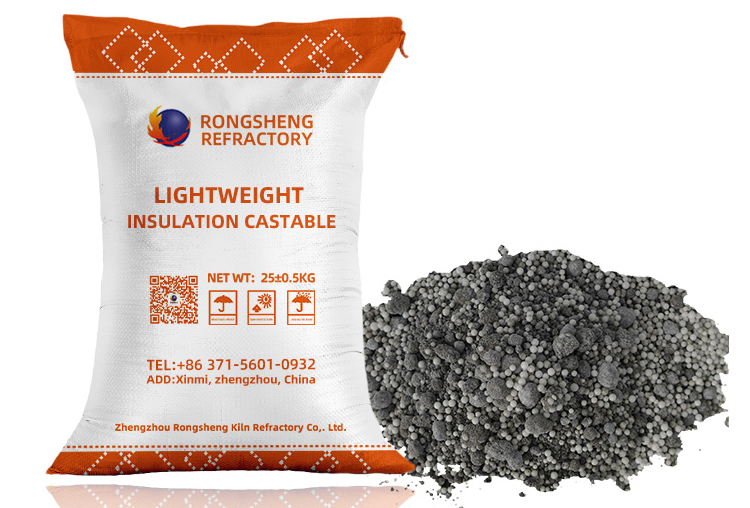Refractory insulation materials have played an important role since they were applied to actual production. Industry personnel and enterprises have also invested a lot of research, and many new products have been developed one after another. This article mainly explains different types of refractory insulation materials from the use temperature, mainly from three levels of low temperature, medium temperature and high temperature.
1. Glass wool insulation material
Glass wool is an inorganic fiber heat-insulating and sound-absorbing material, and its production methods include flame method, steam vertical blowing method and centrifugal blowing method. At present, due to the high energy consumption and high slag content of the flame cotton produced by the flame injection method, it has been replaced by the centrifugal spinning method. This method has low energy consumption, no slag, and no pollution. It is the main production craft. The specific process of this method is: mix quartz powder, dolomite, soda ash, borax and other raw materials evenly and then melt them into molten glass in the furnace, and spray them out at high speed from the high-speed rotating centrifuge nozzle with the help of gas and air mixed gas. , thrown out into primary fibers through the leak hole of the centrifuge; then pulled into extremely fine fibers in the annular combustion chamber; finally, glass wool is made through forming, settling, gathering, spraying binder and other processes. The chemical composition of glass wool is mainly SiO2 (≥60%) and Al2O3, in addition to CaO, MgO, alkali metal oxides and B2O3 and other substances; its thermal conductivity is between 0.037 and 0.039W/(m K) . Glass wool has a certain mechanical strength, easy molding, good insulation performance, corrosion resistance and fatigue damage, and is widely used in aviation, petrochemical, processing and other fields. Generally, the maximum service temperature is about 500 ° C ~ 600 ° C.
2. Mineral (rock) wool insulation material
Mineral (rock) wool belongs to mineral wool. The main components of the material are SiO2 and Al2O3, and the rest are CaO and a small amount of MgO, Fe2O3 and other substances. Rock wool uses natural igneous rocks such as basalt and diabase as the main raw materials, and then adds appropriate amount of auxiliary materials, binders, etc., and is made into fibers by high-temperature melting and centrifugal blowing; rock wool is mainly produced by blowing, centrifuging, centrifuging Prepared by blowing method. At present, the mineral (rock) wool at home and abroad adopts the conventional production process, which is to melt the raw material into a liquid state at high temperature, and then make it into fine fibers through high-pressure air, steam injection or high-speed centrifugation to obtain the raw cotton of the mineral (rock) wool. Then the raw cotton is made into the required series of products such as plates, tubes, and granules through different processes. The porous fibrous structure of mineral (rock) wool makes it have a thermal conductivity of only 0.04W/(m K) at room temperature, which has good heat insulation performance; at the same time, rock wool board also has a certain compressive strength.
Mineral (rock) wool and its series of products have the advantages of thermal insulation, sound absorption and sound insulation, flame retardant, high temperature resistance, no decay, no moth, etc., which make it from the initial single industrial thermal insulation to nuclear reactors, ships, sound-absorbing panels and other special products. advance into the field. Mineral (rock) wool is usually used at a temperature below 600°C, and the maximum operating temperature can reach 650°C. It is currently a more common thermal insulation material at home and abroad. Now it is more used in buildings with fire protection requirements. For example, the per capita consumption in Northern Europe reaches 20kg. In contrast, the per capita consumption of mineral (rock) wool in my country is still very low. Compared with European countries, domestic mineral (rock) wool started relatively late in the application of building exterior wall insulation. The exterior wall insulation of the office building of Gansu Institute of Building Sciences in Lanzhou is the earliest application in this area in China, and the effect is good; although this It is about 20 years later than foreign countries, but in recent years, the domestic mineral (rock) wool industry has widely introduced foreign advanced production technology, actively committed to the development and research of mineral (rock) wool, and has achieved rapid development. In addition to being used alone as an insulation material, rock wool can also be used in a certain proportion to make a hybrid composite material with phenolic resin, jute fiber and other materials.
3. Calcium silicate thermal insulation material
Calcium silicate thermal insulation material is also called microporous calcium silicate thermal insulation material, and its raw materials are generally siliceous materials such as lime and asbestos.
In addition to the above methods, calcium silicate materials can also be prepared through specific processes using residual waste solid phase objects, ceramic slag, and marble chips in industrial production as raw materials. Calcium silicate heat insulation material is fire-resistant and heat-preserving, has a small bulk density, and still has certain mechanical strength under high-temperature environment.



